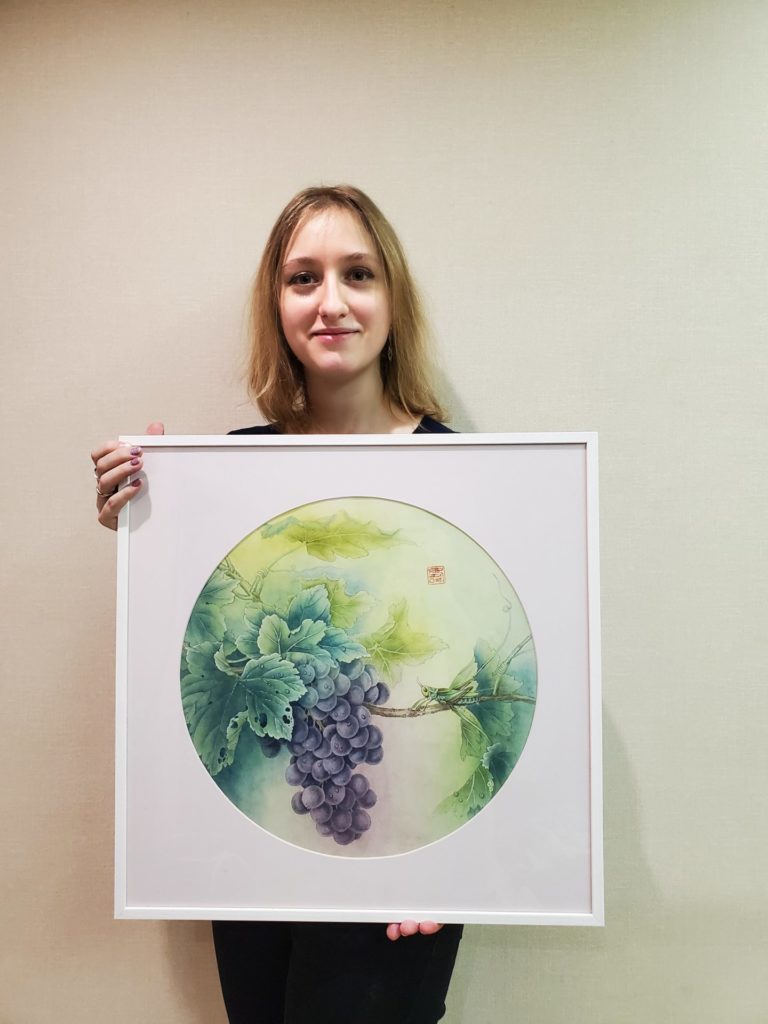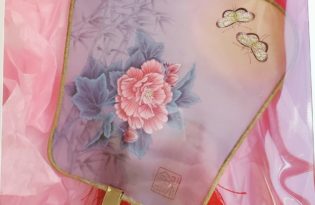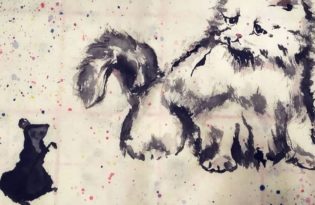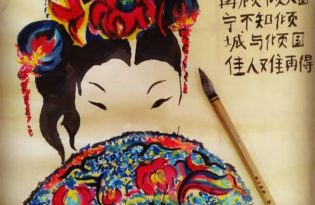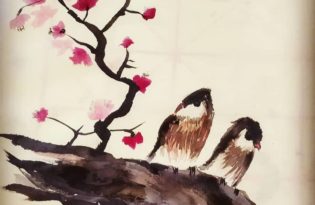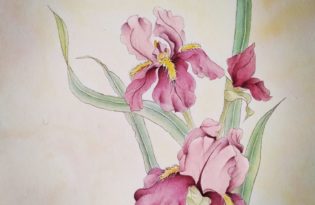“What is drawing? It is working oneself through an invisible iron wall that seems to stand between what one feels and what one can do”.
Vincent Van Gogh
When we pronounce the word “painting”, most people have classic paintings of European artists before their eyes: Da Vinci’s “Mona Lisa”, Van Gogh’s “Starry Night”, Botticelli’s “The Birth of Venus”. However, in addition to the schools of the arts of the West, there are also various directions of the arts of the East. African, Jewish, Islamic, Indian, Chinese, Korean and Japanese art have had a significant impact on Western art, and vice versa.
15 years ago, on December 8, with the assistance of the Art of the Peoples of the World Association, the World Artist Day was approved. To broaden our horizons, we asked Yulia, Project manager/Business Analyst GP Solutions, to tell us about her passion and unveil the wonderful world of traditional Chinese painting😍🎨
– Hi, Yulia 🙂 Thank you for agreeing to answer our questions today. Let’s start with a classic, but no less interesting question: when and where did your passion for drawing was born?
I have always been attracted to Chinese culture and language, and one day, in 2019, I saw an announcement at the Chinese Cultural Center about Sunday master classes in traditional painting. I couldn’t resist and … since then it begun;)
– How and using which tools exactly do you draw, what types of painting have you tried?
I started with the emotional technique Xie-Yi (“xie” — to write and “yi” — the idea), when the picture is drawn in 2-3 hours and without any drafts, pure inspiration. And then I switched to a more complex Gongbi technique (translated as “thorough brush”), because it is as complex as the Chinese language itself, and it is so fascinating! The Gongbi technique used to be available only in imperial palaces, and in Belarus the studio in which I study is the only one in the whole country where you can master this style. The difficulty in the layering of the picture: so, in some works I have more than 30 layers of paint, it takes 60+ hours.
Work on the painting takes from several days to six months. First, a contour is drawn with a special ink on the thinnest rice paper, and the contour line is “read”, i.e. visible and evaluated by the viewer: depending on its type, the folds of clothing, the roughness of tree trunks, the density of wool are transmitted. The names of the lines are beautiful: a nailhead and a mouse tail, a silk thread of deep antiquity, iron wire, etc. There are 18 of them, but modern artists use 5-6 basic ones.
Then gradually the picture is filled with colors. The materials are exclusively Chinese: mineral and vegetable paints. For example, a bright blue shade in the palette is crushed lapis lazuli, yellow is obtained from the condensed sap of trees, and some blue and red colors are made from crushed roots, berries and flower petals.
Tassels are special for Gongbi, made of fine-wooled goats, rabbits, weasels and mice. They also have their own cute names – a mouse mustache, a blade of grass, a golden stroke, a white paw and a white cloud.
The paper is nail-thinner, covered with alum, which gives it a silvery sheen. As you guessed, the paper also differs with various names – clean waters, cicada wings and cicada veil.
In fact, not just painting, but also poetry!
The decoration is also uneasy. The picture must have a cinnabar seal, the artist’s name (if any) and a deal with well wishes. For example, peace of mind, happiness, well-being, harmony, etc.
Often the paintings are decorated with silk, or they are decorated in scrolls. But even in ordinary frames, they look luxurious and expensive.
– Have you ever found your hobby useful in the work of a project manager and a business analyst?
You could say that;) I had to organize the studio’s relocation to a new place, make a content plan for our Instagram, calculate the cost of materials, do advertising and a bunch of other things that were needed to attract new people.
– Expert opinion: every year the Pantone Color Institute selects the color of the next year. For 2023 they chose “18-1750 Viva Magenta” — a crimson-red shade with a purple undertone. What do you think about the color itself and about the idea of the event in general?
This is one of the most common colors in the work – Peony red. I love it very much, it not just refreshes the paintings, but also looks great in the wardrobe. It’s hard to say about the idea of the event, each color is beautiful in its own way. It seems to me that this is just a fashion trend that does not necessary to be followed.
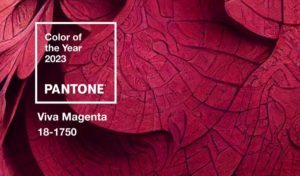
– Name your top 3 of artists.
My top is Chinese artists. I highly recommend googling and admiring the works of Li Zhe, Gong Xueqing or Li Xiaoming. Well, or you can come to my studio, where we have our own small exhibition of copies of works of these masters.
– What do you recommend for beginners in painting to start with? Courses, master classes or “just take a piece of paper and draw”?
First of all, you need to start with paintings viewing, if you like the style, then welcome to my studio of traditional Chinese painting “Imperial Garden” (it’s a sin not to take advantage of the opportunity to advertise). Our laoshi (teacher) will teach and show everything, and also provide materials. The main thing is to have fun and immerse yourself in the process, and the rest is just a matter of experience!
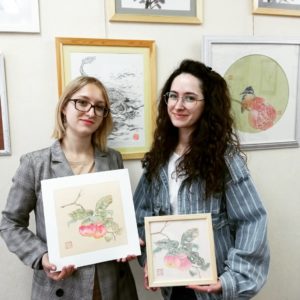
Thank you, Yulia 🙂 万事如意, what means we wish you success in all your affairs🤗
